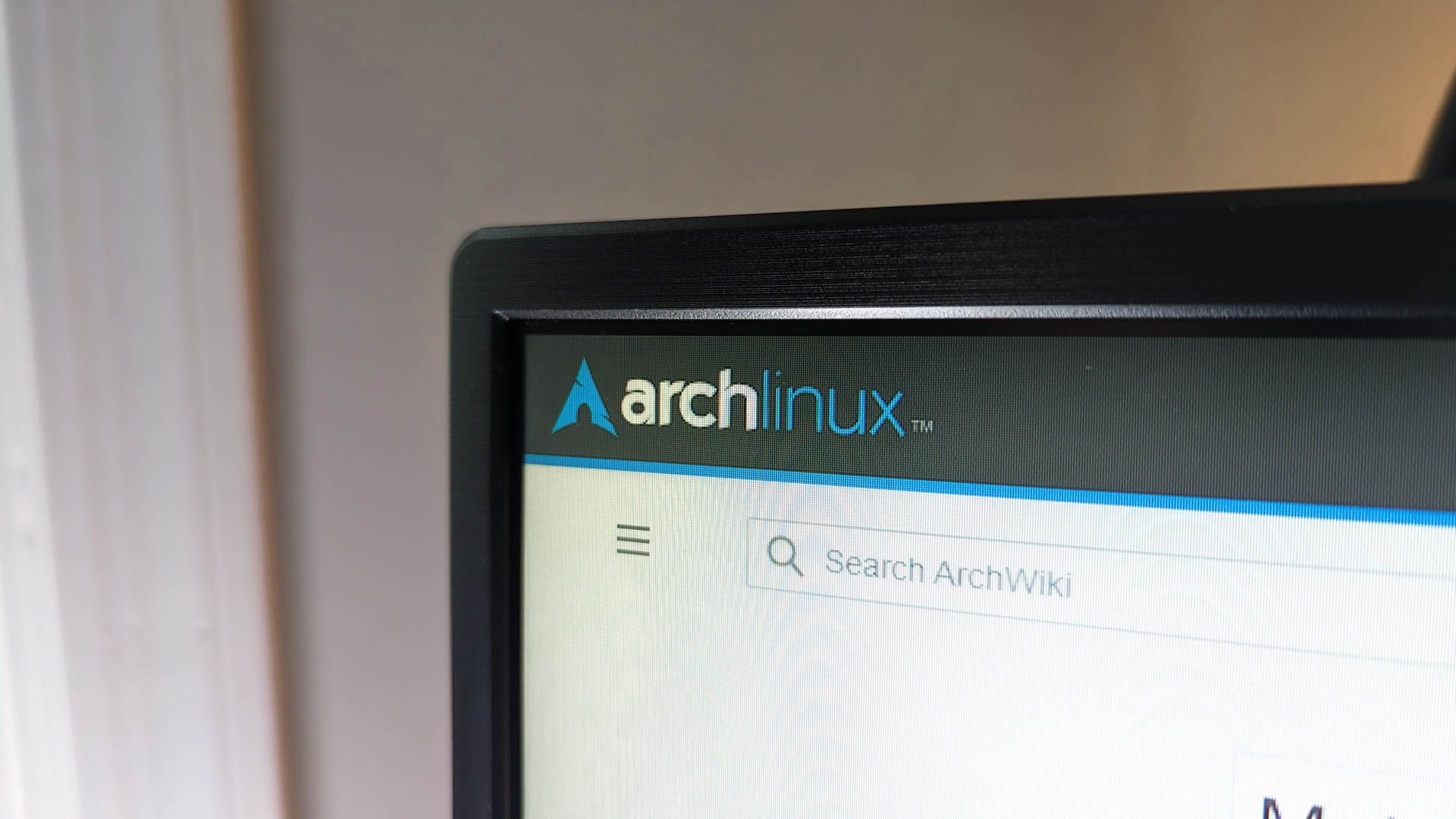Summary
- Arch is an independent distribution with a rolling release model and no corporate involvement.
- Arch delivers a lean and minimal installation, requiring manual setup of desktop environments and packages.
- Installing, using, and maintaining Arch Linux has a steep learning curve, but the ArchWiki serves as a comprehensive and reliable resource for users.
Arch Linux might be the most misunderstood of all the Linux distributions. It’s supposed to be difficult to install and maintain, so why do people use it? What makes Arch so different?
Arch Is Its Own Thing
Because most Linux distributions are based on other, older distributions, they can be classed according to their ancestry. Linux Mint, for example, is based on the long term support version of Ubuntu, which in turn is based on Debian Linux. Mint also has a version directly based on Debian. Fedora Linux is the free member of the Red Hat family. Manjaro and EndeavourOS are based on Arch Linux. Everything is based on something, it seems.
But backtrack up the family tree of a Linux distribution, and eventually you’ll come to its uber-ancestor. There’s only a handful of these top-tier created-from-scratch distributions. The big five are Slackware, Gentoo, Red Hat/Fedora, Debian, and Arch.
Arch doesn’t have corporate backers nor commercial involvement. The only hands on the tiller belong to the developers and maintainers of the Arch project itself and the Arch user community.
They don’t inherit changes from an upstream distribution, and they’re not pressured by corporate influences. They’re free to produce a Linux that meets their stated ideals).
Arch is a rolling release, with updates and patches used to keep your system current. An updated Arch Linux installation is always the most recent version. This is in contrast to the point release system, where all changes since the last release are bundled together and incorporated into the next release.
The rolling release model is the riskier of the two. You get the latest operating system upgrades and application releases as early as possible, but there’s the chance the updates introduce bugs and instabilities. If this happens, the fixes are always released within a day or so. Depending on what is affected, the impact to you might be minor or major, but it should be short-lived.
When you install Arch you’re left with a working but minimal installation. There is zero application bloat. If you haven’t chosen to install something, you won’t have it. And that’s not just for applications. It also applies to vital functions of the operating system. Forgot to install network management utilities? You’ll have no network connections.
Arch Is Lean and Mean
Post-installation, if you want anything more than a terminal window and command line, you need to choose and install a graphical desktop environment or a tiling window manager, and then install it by hand. You also need to install any packages you want.
The Arch way is to give you (virtually) nothing, and let you populate your Linux with the packages and tools you want. Most other distributions give you a bundled set of applications. Which applications, and how many, depends on the distribution. Yes, you can uninstall the things you don’t want, but the Arch way is cleaner.
Arch has its own package manager called pacman, and its own repositories. The software versions in the repositories are the plain vanilla releases from the application maintainers. The same goes for desktops environments. They haven’t been tweaked by the distribution maintainers.
The Arch User Repository (AUR) is an enormous repository of applications packaged by users. These are not installed using pacman, you need to use an AUR “helper” like yay. Between the Arch official repositories and the AUR, Arch has one of the biggest—if not the biggest—collections of curated software available for installation.
There’s a Steep Learning Curve
When you install Arch you have to remember to do a lot of manual steps, and make many decisions. There isn’t a simple ;click, click, done’ installer. There’s no hand-holding here.
There is a text-based helper program, archinstall, that steps you through each part of the process, so you can’t forget to perform a step. But you can still make the wrong choice at any point.
For example, you need to specify how you want your drive(s) partitioned. You don’t get a safety net. There’s no sanity checking to prevent you from creating overlapping, misaligned, or otherwise broken partitions.
Before you dive headfirst into installing Arch, you need to do your own research. Installing requires a lot of critical decisions, and answering them requires knowledge.
Thankfully, There’s the ArchWiki
The ArchWiki is a tremendous technical resource, with information on every aspect of installing and using Arch Linux. It is widely respected, incredibly detailed, clearly written, and above all else, accurate and up to date.
The ArchWiki is one of the jewels in the crown of Arch Linux. Users of other distributions even refer to it too. Ironically, the great thing about the ArchWikli is also its only problem. It is so comprehensive that newcomers can feel overwhelmed. But you’ll never regret the investment you make in getting comfortable with it.
Your Computer Is Your Own
So, after the research, the installation, and the post-installation setup, what do you get? A bloat-free, independent, operating system.
Its package manager installs applications natively, without extra layers of complication and abstraction. If you want Snaps and Flatpaks, you can configure your computer to do that. But out of the box, it does things the native Linux way.
Your applications and your desktop or tiling manager are all plain vanilla, without distribution-specific modifications. Updates come as frequently as you like. It’s up to you. Checking for updates once a week or so seems to be average among the Arch users I interact with.
If you want to find out anything about Arch Linux, or troubleshoot something, or look for updates on issues and fixes, the class-leading ArchWiki is at your disposal.

Related
Avoid Pacman Headaches on Arch Linux by Automating Mirror List Updates
Automate your mirror list updates on Arch Linux so they’re always up-to-date.
And without corporate overseers and other outside pressures, the Arch project can concentrate on delivering a simple, uncluttered, lightweight Linux distribution while adhering to the project’s core principles.








